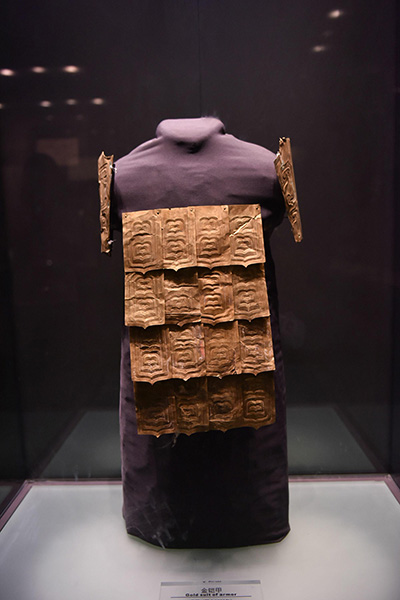Unique approach to showcase treasures
By Chen Nan | China Daily | Updated: 2018-06-01 08:07

When he was director at the Shaanxi History Museum from 1995 to 2004, Zhou wanted to launch a mural exhibition like the one at the Xi'an Qujiang Museum of Fine Arts but failed.
At that time, it was quite controversial to move murals from their original locations such as tombs and temples. And the techniques of restoring and protecting the murals were not so developed.
"Now, changes in air quality, temperature and humidity are closely monitored to prevent damage to the murals," he says.
Zhou, who was born in Zhuji, in Zhejiang province, moved to Tianjin along with his family at the age of 6.
He then graduated with a bachelor's degree of history from Nankai University in 1968, and then taught history at a middle school in Longjiang county, in northern China's Heilongjiang province for four years before he was transferred to teach at a middle school in Xi'an, Shaanxi province, for six years.
Then, in 1978, he enrolled to study history at Northwest University in Xi'an, where he later taught and headed the Research Institution of Ancient Books and the library of the university.
Later, he became director of the Shaanxi History Museum. Moving to a private museum was a challenge for Zhou-especially when it came to fundraising-because unlike national museums, which enjoy governmental support, private museums have to raise funds on their own.
But thanks to the local government of Xi'an, which supports the growth of private museums, the future of the Xi'an Qujiang Museum of Fine Arts is bright, says Zhou.
And with his experience of working in museums over the past four decades, Zhou says that he aims to bring the museum on a par with national museums.
One of his plans is to build the institution as a platform for international communication on murals.
So, in 2013, the museum launched the Qujiang Mural Forum.
The event, which is now held every two years, attracts mural experts from countries such as Japan, Italy, Russia and Australia to discuss issues like the role and impact of murals on cultural development in relation to countries along the Silk Road.
The location of the museum, which is right in the center of Xi'an and near the famous Dayanta Pagoda, also helps.
The museum, which is housed in the Westin Xi'an Hotel, is one of the first private museums in China to combine its operations with an international five-star hotel.
Separately, the museum also has two other exhibitions: Royal Gold Wares of the Ming Dynasty and Imperial Kiln Bricks of the Forbidden City and The Ordos Mongolian History and Culture of Genghis Khan. And previous exhibitions included silver plates and ceramics by Pablo Picasso, 19th century Dutch oil paintings, and ceramics by Le Manufacture Nationale de Sèvres from France.
In August, the museum will host an exhibition titled Royal Gold Wares of the Ming Dynasty, which will showcase over 150 items at the National Museum of Slovenia.
"This will be a breakthrough for private museums in China-holding an independent exhibition abroad," says Zhou.
























